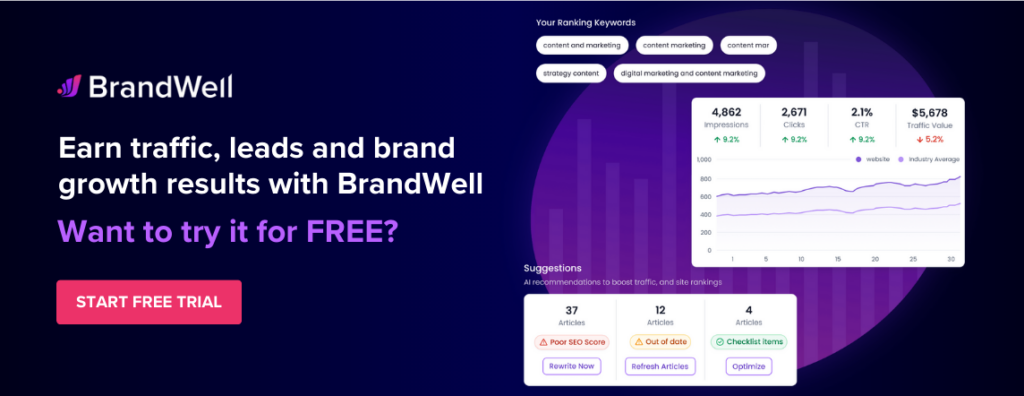Discover top guides, trends, tips and expertise from AIO Writers
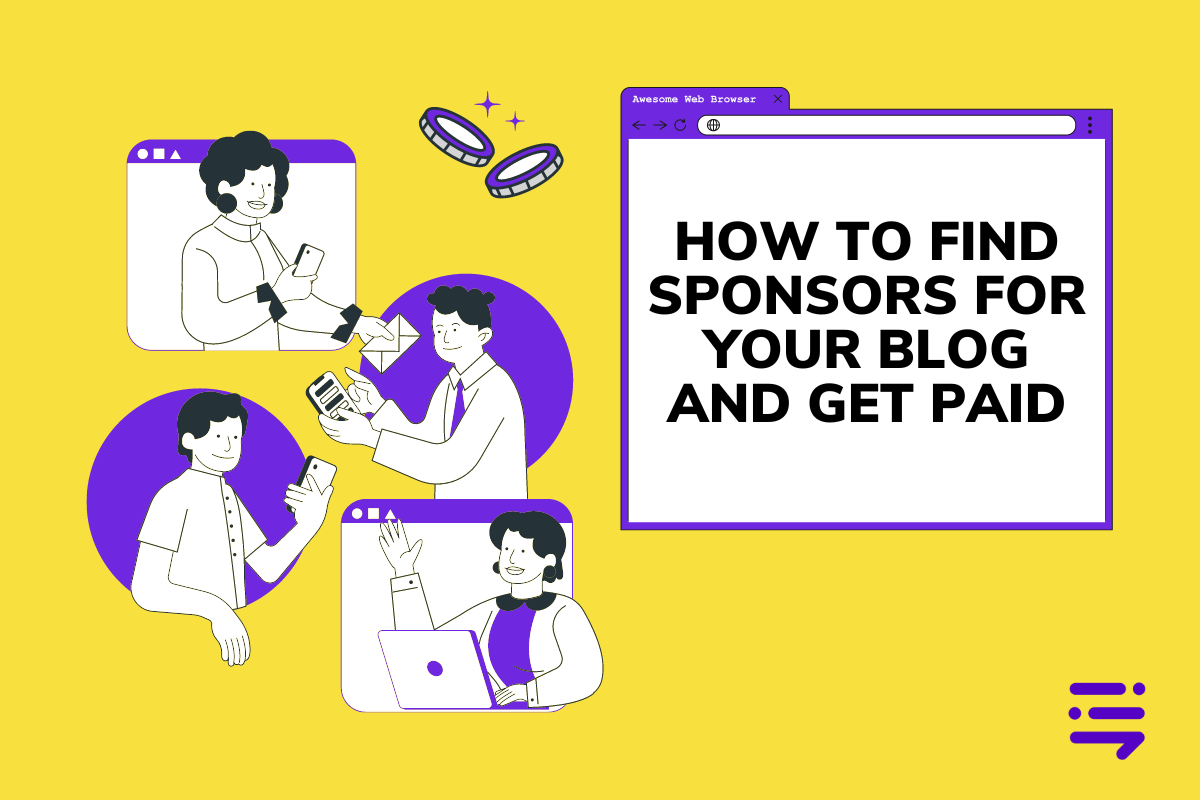
Influencer marketing was the hottest trend in 2022, with over 72% of marketers doing it for major brands. Today, the influencer market is valued at over $16 billion with most of that spending going to sponsored posts.
Want a piece of this pie? Then you need to learn how to get sponsors for your blog.
But first, let’s discuss why you should pursue blog sponsorship opportunities.
Marketers typically make money blogging from ads, but a lot of people don’t want to see ads.
In fact, 34.2% of internet users in the US have adblocking software, so if you are still relying on traditional ad networks for passive income, you might want to start looking for new revenue streams such as sponsored content.
Blog sponsorship can come in the form of guest posts, social media posts, or videos — anything that blog sponsors pay you to create on behalf of a brand, product, service, or destination.
Do you know how to get sponsors for your blog?
Finding sponsors can be a challenge, but the rewards are worth it.
Let’s talk about how to find blog sponsorship opportunities, identify potential sponsors that align with your content, craft an effective pitch, and build relationships within sponsored post networks.
We’ll cover everything you need to know about making money from sponsored post opportunities, including how much sponsors pay bloggers and what is the best way to ask a brand for sponsorship.
Let’s dive into how to find sponsors for your blog.
Table Of Contents:
- How Do Sponsored Posts Work?
- How to Get Sponsors For Your Blog
- How Much Should You Charge for Blog Sponsorship?
- How to Craft an Effective Sponsor Pitch
- Building Relationships with Sponsors
- Types of Blog Sponsorship Opportunities
- FAQs – How to Get Sponsors for Your Blog
- Conclusion
How Do Sponsored Posts Work?
A sponsored post is when an organization or company pays you to talk about them on your blog, social media post, or email newsletter. This type of marketing helps companies introduce their product or service to an influencer’s audience in exchange for payment or other forms of compensation such as free products.
Sponsored post opportunities can be an effective way to monetize blogs. It has become one of the biggest sources of income for bloggers around the world with the influencer market expected to reach $24 billion by 2025.
Benefits of Sponsored Posts for Brands
Sponsored posts can provide several benefits for businesses as part of their marketing and advertising strategies.
Here are some of the key advantages:
Increased visibility and reach: Sponsored posts allow brands to tap into the audience of influencers or platforms with a large following. This exposure can significantly expand the brand’s reach and make it visible to potential customers who might not have encountered it otherwise.
Targeted marketing: Brands can choose influencers or platforms that align with their target audience, ensuring that the sponsored content reaches the right demographics. This targeted approach can lead to higher engagement and conversion rates.
Authenticity and trust: When influencers or content creators promote a brand through sponsored blog posts, it can be perceived as a genuine recommendation rather than a traditional ad. This can build trust and authenticity, making consumers more receptive to the brand’s message.
Enhanced brand awareness: Sponsored posts can create greater brand awareness, especially if the influencers’ followers are highly engaged and enthusiastic about their content. This awareness can translate into increased brand recall and recognition.
Improved credibility: Associating with reputable influencers or platforms can lend credibility to a brand. Followers often view influencers as experts or trustworthy sources, and their endorsement can positively impact the brand’s image.
Access to niche markets: Sponsored posts can help brands reach specific niches or communities that are relevant to their products or services. This is particularly useful for brands with specialized offerings seeking to connect with a particular audience.
Performance insights: Sponsored blog posts often come with detailed performance metrics, allowing brands to track the effectiveness of their campaigns. This data can help in refining future marketing strategies and optimizing budget allocation.
Social proof and user-generated content: When influencers or users share sponsored posts, it can lead to the creation of user-generated content (UGC). UGC can serve as social proof, showcasing real customers’ positive experiences with the brand.
Cost-effective advertising: Compared to traditional advertising channels like TV or print, sponsored posts can be more cost-effective, especially for smaller brands with limited marketing budgets.
Flexibility in content creation: Brands sponsor bloggers to develop creative and engaging content that resonates with their audience. This flexibility allows for diverse storytelling and content formats that can capture attention effectively.
While sponsored posts are a smart strategic move for brands, they must still carefully select influencers or platforms that align with their values and target audience to maximize the benefits of sponsored posts and ensure a successful marketing campaign.
Benefits of Sponsored Posts for Bloggers
As a blogger, do you know how to find brand sponsors?
Sponsored posts can offer several benefits for you, especially if you have already established a presence and a substantial following in your niche.
Here’s why you should consider learning how to get sponsors for your blog:
Monetization: Sponsored posts provide you with an opportunity to make money from your blog posts. Brands pay bloggers quite a good sum to create and publish content featuring their products or services.
Financial rewards: Depending on your reach and influence, sponsored posts can yield significant financial rewards. Successful collaborations with brands can result in lucrative compensation, allowing you to earn more while doing what you love.
Diversified income streams: Sponsored posts can be a part of your diversified income strategy. Alongside other revenue streams like ads, affiliate marketing, and product sales, sponsored posts can contribute to a more stable and sustainable income.
Access to products/services: Through blog sponsors, you may receive complimentary products or services from your favorite brands. This can be a valuable perk, giving you access to new products or experiences you can share with your audience.
More audience engagement: Well-executed sponsored campaigns can engage your audience and generate discussions. When you introduce your followers to new products or services, it can lead to meaningful interactions and feedback.
Expanded reach and growth: Collaborating with brands through sponsored posts can expose you to a broader audience. This exposure may attract new followers, expanding your reach and influence.
Build relationships with brands: Sponsored posts can also be an avenue for you to build relationships with brands you genuinely appreciate and believe in. Establishing these connections may lead to future collaborations and additional opportunities.
Professional development: By creating sponsored posts, you get to hone your content creation and storytelling skills. This can lead to more high-quality content as you enhance your professional development as a content creator.
Affirmation of influence: Brands approaching you for sponsored posts is a validation of your influence and expertise within your niche. It shows that brands recognize your ability to sway your audience’s opinions.
Blog sustainability: If you’re committed to maintaining your blog long-term, sponsored posts can be a crucial element in sustaining your online presence. Financial support from brands can help cover operational costs and allow you to continue producing content.
It’s important to strike a balance between sponsored and organic content, ensuring that your audience remains engaged and trusts your recommendations. Genuine and authentic sponsored posts are more likely to resonate positively with your followers and maintain your credibility.
How to Get Sponsors For Your Blog
Before you can offer sponsored posts, you must first establish a strong online presence either through a blog or social network account where you can interact with your readers or followers regularly.
Here are 10 tips for how to get sponsors for your blog:
1. Create High-Quality Content
Produce consistent, high-quality content that showcases your expertise and establishes you as an authority in your niche. Quality content will attract readers and potential sponsors.
2. Build Your Audience
Focus on growing your blog’s audience and engagement across various platforms, such as social media, email newsletters, and other online communities. A larger, engaged audience will be more appealing to potential sponsors.
3. Engage with Your Audience
Interact with your readers and followers regularly. Respond to comments, messages, and emails. Building a loyal and engaged audience will make your blog more attractive to sponsors.
4. Create a Media Kit
Create a professional media kit that showcases your blog’s statistics, audience demographics, and the types of sponsored opportunities you offer. Make sure to highlight the benefits of sponsoring your blog.

A media kit showcases your blog to potential sponsors. Source: The Side Blogger
5. Reach Out to Brands
Don’t be afraid to approach brands directly. Look for companies whose products or services align with your blog’s niche. Send them a personalized pitch explaining how collaboration could be beneficial for both parties.
6. Network at Events
Attend industry events, conferences, and meetups related to your blog’s niche. Networking with other bloggers, businesses, and potential sponsors can open up opportunities for collaboration.
7. Participate in Affiliate Programs
Join affiliate marketing programs relevant to your niche. As you promote products or services through these programs and earn commissions, you can demonstrate your ability to drive sales and conversions to potential sponsors.
Read this guide on how to do affiliate marketing on your blog.
8. Offer Value to Sponsors
Show potential sponsors the value you can bring to their brand. Offer creative ideas for sponsored content that align with your blog’s style and the brand’s marketing objectives.
9. Collaborate with Other Bloggers
Partner with other bloggers or influencers on sponsored campaigns. Brands may be interested in co-sponsored content that reaches a broader audience.
10. Stay Professional and Transparent
Maintain professionalism in your interactions with sponsors. Be transparent about sponsored content and clearly disclose any sponsored posts to your audience.
Look at how BuzzFeed publishes sponsored content for an example:



Remember, building relationships with sponsors takes time and effort. Stay persistent, focus on creating value for your audience, and consistently demonstrate the benefits of collaborating with your blog.
How Much Should You Charge for Blog Sponsorship?
Setting rates for your sponsored posts can be a bit tricky, but it’s essential to value your work and ensure fair compensation for your efforts. Here are some steps to help you determine appropriate rates for your sponsored posts:
Understand Your Value: Take stock of your blog’s reach, engagement metrics, and influence within your niche. Consider factors like your blog’s traffic, social media followers, email subscribers, and overall engagement rates. Brands are often willing to pay more for bloggers with a highly engaged and targeted audience.
Analyze Your Metrics: Use analytics tools to gather data on the performance of your previous sponsored posts. Look at metrics like click-through rates, conversion rates (if applicable), and the overall impact the sponsored content had on the brand’s visibility and reach.



Screenshot from Influencer Marketing Hub
Consider Your Niche: Different niches have varying levels of demand and competition. Blogs in popular or highly specialized niches may command higher rates compared to those in broader and more competitive areas.
Check Industry Standards: Research what other bloggers in your niche with similar audience sizes and engagement are charging for sponsored posts. This will give you a sense of the industry standards and help you price your services competitively.
Factor in Your Effort and Expertise: Consider the time and effort required to create sponsored content. Sponsored posts often involve additional research, planning, and collaboration with the brand. Factor in the expertise you bring to the table as a content creator and influencer.



Screenshot from Influencer Marketing Hub
Offer Different Packages: Provide potential sponsors with a range of packages that offer varying levels of exposure and promotion. This allows sponsors to choose a package that aligns with their budget and marketing goals.
Negotiate Flexibility: Be open to negotiation, especially if the brand has specific budget constraints. Flexibility can help you secure collaborations and build long-term relationships with sponsors.
Update Rates Periodically: As your blog’s audience and influence grow, it’s essential to reassess your rates regularly. Don’t hesitate to increase your rates as your value and reach increase.



Screenshot from Influencer Marketing Hub
Consider Long-Term Partnerships: Long-term partnerships with brands can be mutually beneficial. Consider offering discounted rates or additional perks for sponsors looking to collaborate on multiple projects.
Clearly Communicate Value: When discussing rates with potential sponsors, clearly communicate the value they will receive from partnering with your blog. Emphasize the benefits of your engaged audience and the results they can expect.



Screenshot from Influencer Marketing Hub
Remember that setting rates for sponsored posts is a subjective process and can vary depending on your unique circumstances and the market demand. Stay confident in the value you bring to the table and be willing to negotiate while ensuring that the compensation you receive is fair for the work you put into creating sponsored content.
How to Craft an Effective Sponsor Pitch
Figuring out how to find sponsors for your blog is one thing. What do you do when it’s time to reach out and actually clinch a partnership?
Just to review, these are the key steps in finding blog sponsors:
- Knowing who your potential sponsors are is the first step in finding successful partnerships. Start by researching companies and brands that align with your audience’s interests, values, and needs. Look for those that have a presence in the same markets as you or ones that share similar target audiences.
- Additionally, consider organizations whose mission statements match yours or whose products could be beneficial to your followers.
- After identifying potential sponsors, consider their target demographic such as age range, income level, and country of origin. Look into any past successes with other influencers within your niche so you can make an informed decision when selecting a partner. This can help narrow down which sponsor will provide the most value to you in a sponsorship agreement.
Once you’ve identified suitable sponsors, it’s time to reach out. You’ll want to craft an effective pitch tailored specifically for each sponsor outlining why they should hire you for a sponsored posting campaign.
What makes you stand out from other bloggers? What benefits do their brand get from working with you? It is important not only to showcase yourself but also to demonstrate how working together will benefit them.
Talk about your social media influence. In most cases, having a strong online presence is just as important (if not more) than traditional marketing efforts when trying to attract sponsored posting partners.
Your proposal should contain all the specifics of your sponsorship offer, such as what can you provide in terms of visibility and promotion for possible sponsors. Make sure that your proposal is tailored to each individual sponsor’s needs and objectives.
So how do you put all these together into one compelling pitch? Here’s an example.


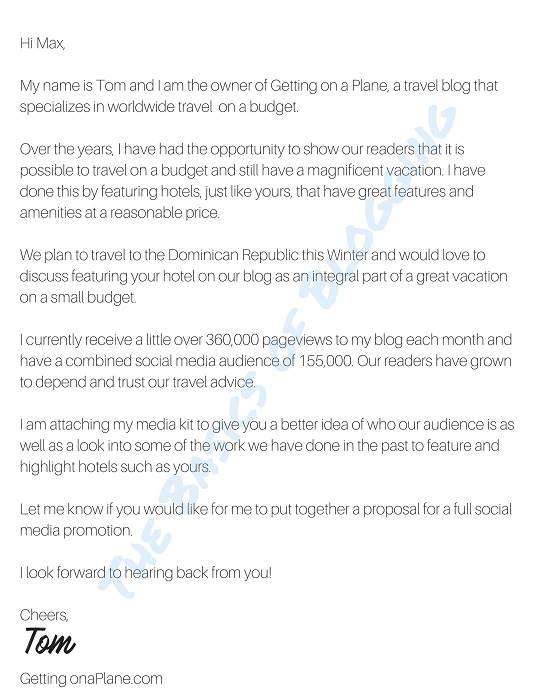

Source: The Basics of Blogging
Pro tip: BrandWell‘s AIMEE chatbot can help you reach out to potential brand sponsors. Tap one of its specialized AI agents to write the perfect pitch that closes the deal.
Building Relationships with Sponsors
Building relationships with sponsors is a must for any successful sponsorship program. With effective communication and collaboration, you can build meaningful connections with sponsors that will prove mutually beneficial.
Forging a strong relationship involves having regular check-ins via phone or video calls, sending emails or newsletters about upcoming events or promotions, and providing detailed reports on how the sponsorship is performing.
To ensure that both parties gain maximum value from publishing sponsored posts, establish clear objectives and expectations from the outset. Make sure you clearly outline expectations around timelines, deliverables, and ROI targets.
Be open to discussing new ideas and opportunities to keep things fresh and interesting while helping you stay ahead of industry trends.
Regular communication is critical when it comes to keeping a sponsor happy. Make sure you respond promptly when they reach out and provide them with updates on any progress of their brand sponsorships.
Keeping them informed also helps prevent misunderstandings. If something isn’t going according to plan, then don’t wait until it becomes an issue before bringing it up.
Finally, remember that at its core this is still a business relationship. Always remain professional even during casual conversations or meetings.
Nurturing connections with sponsors is essential for earning a continuous stream of income from sponsored post websites. With the right strategies, you can maximize the value of your partnership by leveraging social media platforms, creating engaging content, and measuring results for optimization.
Types of Blog Sponsorship Opportunities
There are several types of sponsored posts that you can create in collaboration with brands. Each type offers a different approach to showcasing products or services.
Here are some common types of sponsored posts:
1. Product Reviews
In a product review sponsored post, you try out a brand’s product or service and share your honest feedback and opinions with your audience. The review can include photos, videos, and detailed insights about the product’s features and performance.
Here’s an example of a product review for a coffee brand:
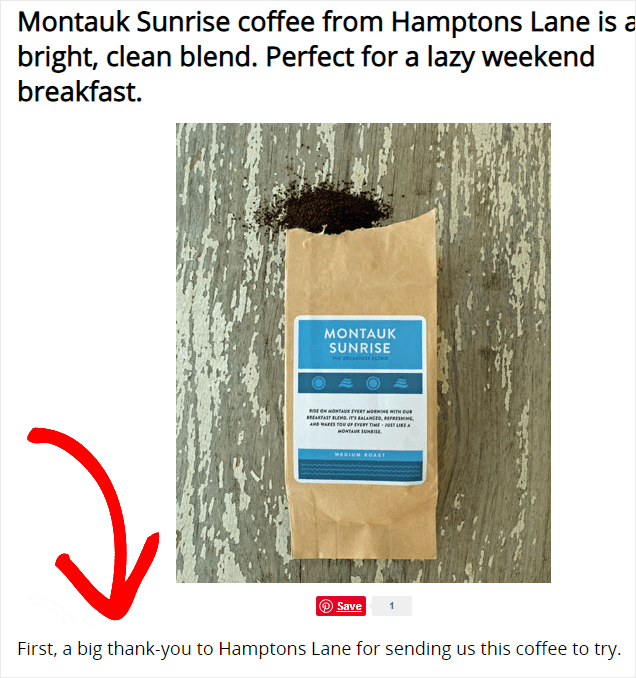


2. Tutorials and How-To Guides
Sponsored tutorials or how-to guides demonstrate how to use a brand’s product or service effectively. These posts are informative and showcase the product’s benefits while helping the audience understand its usage.
3. Giveaways and Contests
Brands may sponsor a giveaway or contest hosted by you. This type of sponsored post encourages audience engagement and brand awareness as participants have a chance to win a product or prize provided by the brand.
4. Sponsored Videos
Some sponsored posts take the form of videos where you create video content featuring the brand’s product or service. Video posts can be engaging and provide an in-depth look at the sponsored item.
Here’s an example of a sponsored video for Apple:



5. Branded Stories or Day-in-the-Life Posts
These posts offer a glimpse into your daily life with the brand’s product or service integrated into the story naturally. They allow the audience to see how the product fits into your routine.
6. Sponsored Social Media Posts
You may promote a brand’s product or service through sponsored posts on social media platforms like Instagram, Twitter, or Facebook. These posts typically include high-quality visuals and concise, compelling captions.
Here’s an example of a sponsored post on Facebook:
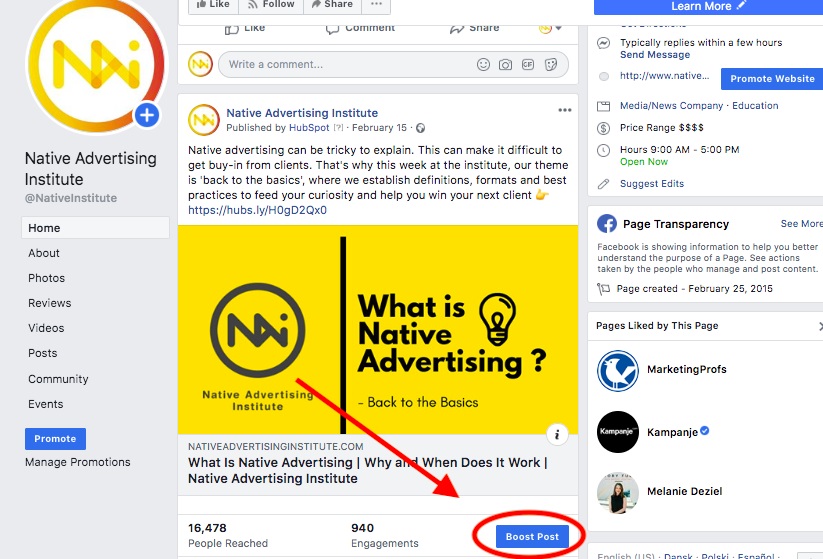


7. Guest Posts or Sponsored Articles
The most common way how to find blog sponsors is to create guest posts or articles on your blog. These articles usually align with the brand’s niche and add value to your audience.
Here’s an example of a sponsored article on HuffPost:



8. Brand Ambassadorships
Long-term collaborations between you and a brand can lead to brand ambassadorships. As brand ambassadors, you promote the brand over an extended period, creating sponsored content and representing the brand’s values.
9. Sponsored Collaborations with Other Bloggers
Brands may sponsor a collaborative post featuring multiple bloggers or influencers. This type of post can reach a wider audience and showcase diverse perspectives on the brand.
10. Sponsored Travel or Experiences
In some cases, brands may sponsor you to travel or participate in specific experiences related to their products or services. These sponsored posts offer unique and immersive content.
Regardless of the format, sponsored posts must maintain authenticity and align with your style and values. This is the promise of BrandWell — creating content that sounds like you and resonates positively with your audience.
FAQs – How to Get Sponsors for Your Blog
How do I find blog sponsors?
- Set up a sponsor page and media kit on your site.
- Create top-quality content that attracts sponsors.
- Find brands you want to work with and pitch a sponsored post to them.
- Look at your competition and see who’s sponsoring them.
How do I find sponsored content?
If you see a byline or description that mentions an advertiser, that means the piece of content has been sponsored. The FTC requires sites based in the United States to add this disclosure.
What is the best way to find a sponsor?
- Research potential sponsors.
- Look at your existing followers.
- Provide sponsor incentives.
- Reach out to established companies.
- Use data to legitimize your pitch.
- Find the right contact.
- Build a connection.
- Follow up.
How much do sponsors pay bloggers?
Let’s say you get around 100,000 monthly average page views. Divide that number by 1000 to get your CPM. If your rate per 1,000 impressions is $3.00, then your sponsor should pay you $300 for a single blog post.
Conclusion
Publishing sponsored posts can be a lucrative gig if your blog is already generating good traffic. Learning how to get sponsors for your blog can be a great way to bring in revenue and increase the worth of your material. By identifying potential sponsors, crafting an effective pitch, and delivering results, you can ensure that working with brands can be beneficial for both parties.
Creating content for your brand sponsors doesn’t have to be difficult. With BrandWell, you can create any type of content within minutes — whether you’re writing a guest blog article, social media post, branded story, how-to guide, or product review. Automate your blog content today!

UNLOCK YOUR POTENTIAL
Long Headline that highlights Value Proposition of Lead Magnet
Grab a front row seat to our video masterclasses, interviews, case studies, tutorials, and guides.

